
Today I finally heard from a customer in the Naples Florida area. I have been trying to reach these guys since hurricane Irma rolled through, so it was a relief to finally talk to them. They are still 3 weeks away from getting power. Thank goodness they have a slab lifting rig with a big generator to get some power and AC going.
All across the gulf coast and east coast, seawalls and other structures near the water have been put under immense stress. Severe scouring, sinkholes, and seawall failures are being reported. The damage is staggering.
One hurricane-related phenomenon that occurred on Florida's west coast was a suction that drained the water from harbors and bays. You may have seeen the videos on YouTube. Unfortunately, that sucking action pulled with it tons of sandy soil from behind seawalls and bulkheads. In many cases the seawall toes have completely blown out. The amount of property in danger due to further erosion and exposure to the sea is sobering.
There is help available. Alchemy-Spetec and our network of certified contractors are experienced at stopping soil loss, fixing sinkholes, and stabilizing bulkheads and repairing seawalls. In cases where the entire seawall was destroyed, soil stabilization may be the only line of defense against a growing loose soil zone threatening to consume the property your business or home is built on.
.png?width=320&name=Seawall%20Repair-blog%20(1).png) The product our contractors use to stop this soil loss is a permeation resin designed to penetrate loose soil zones, bind it all together, and stop further loss. This product, AP Fill 700, has a controlled reaction time that gives the experts the control to make the material do what they want it to. Whether it’s binding soil or filling voids and seawall breaches; it fits the bill.
The product our contractors use to stop this soil loss is a permeation resin designed to penetrate loose soil zones, bind it all together, and stop further loss. This product, AP Fill 700, has a controlled reaction time that gives the experts the control to make the material do what they want it to. Whether it’s binding soil or filling voids and seawall breaches; it fits the bill.
AP Fill 700 is drinking water contact approved and phthalate free. Don’t forget to inquire about that with your contractor. Some competitor products contain phthalates and those are marine toxins. Alchemy-Spetec has your back when it comes to the environment.
Protect your property, stop loss of soil and the formation of dangerous sinkholes, and trust our certified contractors that use Alchemy-Spetec soil stabilizing and seawall protecting polyurethanes.
Call 404-618-0438 to get the help you need.



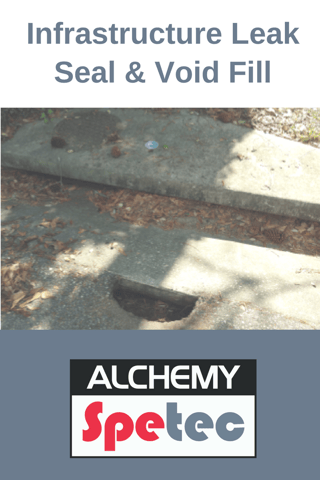 As Andy Powell states in his post:
As Andy Powell states in his post:

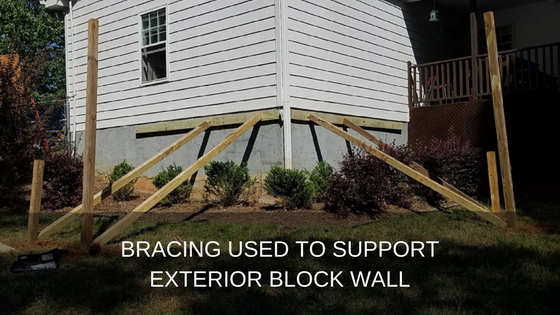
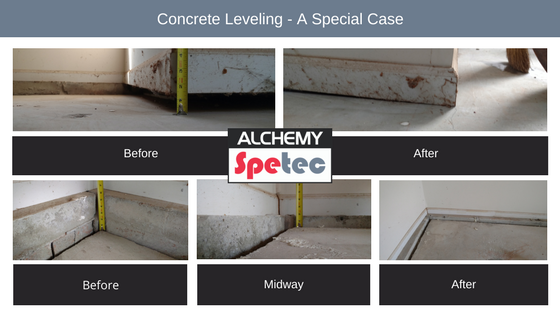






 The Great Plains of Canada stretch from Manitoba, across Saskatchewan, and on into Alberta. This predominantly agricultural region is the breadbasket of our neighbor to the North. Small towns and villages are scattered across these thousands of square miles, serving as the small population bases for the farming communities. These rural municipalities are faced with unique challenges when it comes to managing their water systems, roadways, and other infrastructure. For example, if there is a road that needs a small amount of paving or some concrete that needs to be poured, there may only be one time per year when the mobile batch plants comes through town. Combine this with some bitter cold, a very limited budget, and long distances to industrial centers, and you can see how it is hard on the small municipalities. Small issues are major, and major issues can be catastrophic.
The Great Plains of Canada stretch from Manitoba, across Saskatchewan, and on into Alberta. This predominantly agricultural region is the breadbasket of our neighbor to the North. Small towns and villages are scattered across these thousands of square miles, serving as the small population bases for the farming communities. These rural municipalities are faced with unique challenges when it comes to managing their water systems, roadways, and other infrastructure. For example, if there is a road that needs a small amount of paving or some concrete that needs to be poured, there may only be one time per year when the mobile batch plants comes through town. Combine this with some bitter cold, a very limited budget, and long distances to industrial centers, and you can see how it is hard on the small municipalities. Small issues are major, and major issues can be catastrophic. In central Saskatchewan we have a contractor, JACC Structures, that we have been working with going on our third year now. The owner, Randy Serhan, purchased a slab lifting poly rig from our company and we helped him on his first big job, lifting all of the slabs in a cement plant that was being converted to a seed sorting facility. (
In central Saskatchewan we have a contractor, JACC Structures, that we have been working with going on our third year now. The owner, Randy Serhan, purchased a slab lifting poly rig from our company and we helped him on his first big job, lifting all of the slabs in a cement plant that was being converted to a seed sorting facility. (


.png?width=320&name=Curtain%20Wall%20Grouting-blog%20(3).png) Curtain wall grouting is a leak seal method that is often required when cracks cannot be identified, when walls are made of material that does not respond well to crack injection (such as masonry, stone and CMU), and when previous leak seal methods have failed.
Curtain wall grouting is a leak seal method that is often required when cracks cannot be identified, when walls are made of material that does not respond well to crack injection (such as masonry, stone and CMU), and when previous leak seal methods have failed. 

.png?width=320&name=Residential%20Seawall%20Repair-blog%20(1).png) But one challenge many oceanfront home owners eventually find themselves facing is leaking seawalls. You depend on seawalls to keep water on the outside and the the soil that supports your property on the inside.
But one challenge many oceanfront home owners eventually find themselves facing is leaking seawalls. You depend on seawalls to keep water on the outside and the the soil that supports your property on the inside. 
.png?width=396&name=tools-blog%20(4).png) But first you’ve got to understand one thing; you can’t bring a knife to a gunfight. Expert contractors have to know what is going on at all times. In the picture at the top of this post, you can see a slab that I probably would have not attempted to repair. However, with several tools to help monitor the different pieces of this puzzle, this contractor was able to put it back together again. They say information is power and I am a firm believer in that, especially when it comes to taming jacked up concrete slabs. In the picture you can see three different slabs. Our customer Morgan Helms of Helms Polyfoam (Jackson, MS) is using a ZipLevel, a machinist’s dial indicator, and a putty knife to monitor what each of the slabs is doing.
But first you’ve got to understand one thing; you can’t bring a knife to a gunfight. Expert contractors have to know what is going on at all times. In the picture at the top of this post, you can see a slab that I probably would have not attempted to repair. However, with several tools to help monitor the different pieces of this puzzle, this contractor was able to put it back together again. They say information is power and I am a firm believer in that, especially when it comes to taming jacked up concrete slabs. In the picture you can see three different slabs. Our customer Morgan Helms of Helms Polyfoam (Jackson, MS) is using a ZipLevel, a machinist’s dial indicator, and a putty knife to monitor what each of the slabs is doing.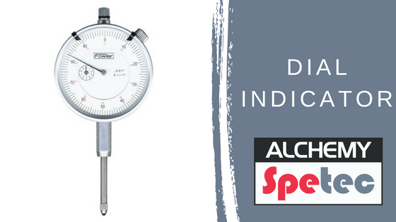 The dial indicator tells him which slab is moving. In the picture, the base of the dial indicator is on the slab that Morgan is injecting under while the dial point is on the slab he doesn’t want to move. It doesn’t really matter how you configure it as long as you understand what the needle movement means. A needle on a machinist dial indicator moves in .001” increments. If the needle on this dial indicator is rising, that would mean the wrong slab is lifting and he knows to stop. If the needle is falling then the slab he is injecting under is lifting, and that’s what he wants.
The dial indicator tells him which slab is moving. In the picture, the base of the dial indicator is on the slab that Morgan is injecting under while the dial point is on the slab he doesn’t want to move. It doesn’t really matter how you configure it as long as you understand what the needle movement means. A needle on a machinist dial indicator moves in .001” increments. If the needle on this dial indicator is rising, that would mean the wrong slab is lifting and he knows to stop. If the needle is falling then the slab he is injecting under is lifting, and that’s what he wants.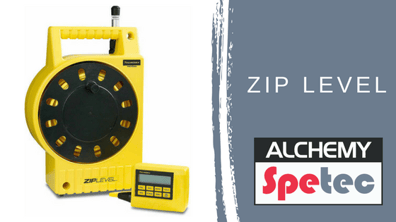 So what if both slabs are moving equally? In that case the dial indicator would remain stable or fluctuate slightly in both directions. This is where a ZipLevel or a laser transit would come in handy. Morgan has his ZipLevel indicator box (in yellow) on the slab he doesn’t want to move. It will let him know if the slab he doesn’t want to move is lifting so he can stop and re-evaluate what to do next.
So what if both slabs are moving equally? In that case the dial indicator would remain stable or fluctuate slightly in both directions. This is where a ZipLevel or a laser transit would come in handy. Morgan has his ZipLevel indicator box (in yellow) on the slab he doesn’t want to move. It will let him know if the slab he doesn’t want to move is lifting so he can stop and re-evaluate what to do next. One of my favorite tools is the metal putty knife. Slabs often move in increments so small that you can’t detect them visually. If you wedge a putty knife into a crack between two slabs, you will see it wiggle when there’s slight movement. So the putty knife in the picture is on the third section of slab and letting Morgan Helms know what is going on with that piece.
One of my favorite tools is the metal putty knife. Slabs often move in increments so small that you can’t detect them visually. If you wedge a putty knife into a crack between two slabs, you will see it wiggle when there’s slight movement. So the putty knife in the picture is on the third section of slab and letting Morgan Helms know what is going on with that piece.